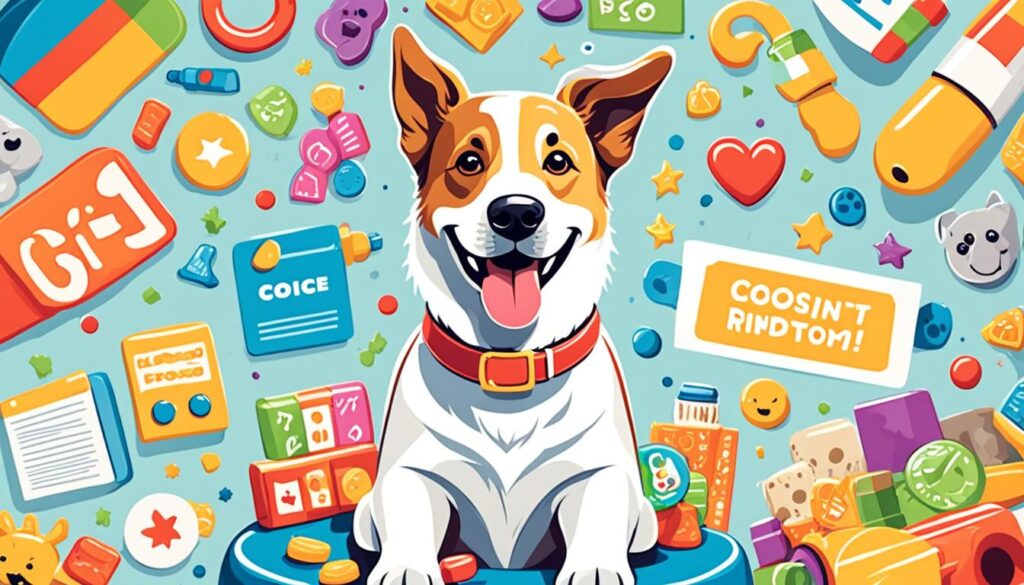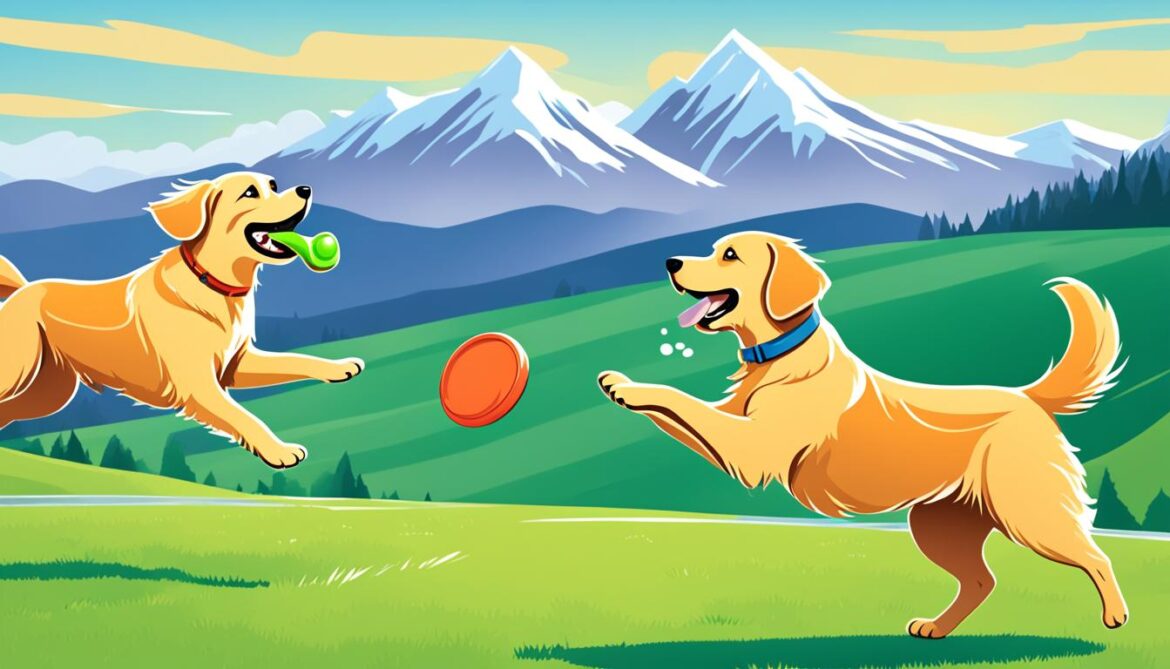Imagine the joy of coming home to a well-behaved, happy dog eagerly wagging its tail at your arrival. A dog that listens to your commands, walks obediently by your side, and greets strangers with a friendly disposition. This is the dream of every dog owner, and it is within your reach.
Whether you’ve recently welcomed a new furry friend into your home or have been struggling with training for some time, we are here to help. In this article, we will share expert dog training tips that have been proven to unlock your dog’s potential and create a strong bond between you and your canine companion.
With these tips and techniques, you will be equipped with the knowledge and skills to navigate the world of dog training successfully. Together, we will explore the best methods for understanding your dog’s behavior, implementing positive reinforcement, maintaining consistency, and fostering socialization and obedience.
Key Takeaways:
- Implement expert dog training tips to unlock your dog’s potential
- Understand your dog’s behavior for effective training
- Utilize positive reinforcement techniques to establish trust and encourage learning
- Maintain consistency and patience throughout the training process
- Focus on socialization and obedience training for a well-behaved dog
Understanding Your Dog’s Behavior
Before you start training your dog, it’s important to have a solid understanding of their behavior. By knowing how dogs think and why they behave a certain way, you can develop effective training strategies that will yield the best results.
Dog Training Techniques
When it comes to training your furry friend, you want to ensure that you’re using the best techniques available. By employing the right methods, you can establish a strong foundation for successful training.
Here are some effective dog training strategies:
- Positive Reinforcement: Reward your dog with treats, praise, and affection every time they exhibit desired behavior. This encourages them to repeat the behavior and strengthens the bond between you and your pet.
- Clicker Training: Use a clicker to mark and reinforce positive behavior. The sound of the clicker serves as a signal that your dog has done something right and will be rewarded.
- Consistency: Dogs thrive on consistency, so be sure to establish a routine and stick to it. This will help your dog understand what is expected of them and make the training process more effective.
- Patience: Training takes time, so it’s important to be patient with your dog. Stay calm and understanding, and remember that learning new skills can be challenging for them.
These techniques are particularly useful for beginners who are new to dog training. They provide a solid framework for building a positive and trusting relationship with your dog while achieving the desired results.
Remember, each dog is unique, so it’s important to tailor your training approach to their individual personality and needs.
Understanding Dog Behavior
Dogs have their own ways of communicating and expressing themselves. By understanding their behavior, you can address any training challenges that may arise more effectively.
Dog behavior can include body language, vocalizations, and social interactions. It’s essential to pay attention to these cues to gain insight into what your dog is feeling or trying to communicate.
Here are a few key behaviors to watch for:
- Tail wagging: Contrary to popular belief, tail wagging doesn’t always indicate happiness. It can also signify excitement, anxiety, or even aggression. Pay attention to the context in which the wagging occurs.
- Ear positioning: The position of the ears can tell you a lot about a dog’s mood. Raised ears indicate attentiveness, while flattened ears can signal fear or submission.
- Body posture: A relaxed dog will have a loose, wiggly body, while a tense or stiff posture may indicate stress or aggression.
By observing and understanding these behaviors, you’ll be better equipped to address any training challenges or communication issues that may arise during the training process.

Remember, training your dog requires time, patience, and dedication. By using effective dog training strategies and understanding your dog’s behavior, you can ensure a rewarding and successful training journey.
Positive Reinforcement Techniques
In this section, we will explore the power of positive reinforcement techniques in dog training. Expert trainers highly recommend using positive reinforcement as it is not only effective but also creates a positive learning experience for your furry friend. By rewarding desired behavior and establishing trust, you can enhance your dog’s training process.
Positive reinforcement involves providing rewards such as treats, praise, or playtime when your dog displays the desired behavior. This technique encourages your dog to repeat the behavior, strengthening the training outcome.
Expert advice on dog training:
“Positive reinforcement is a key component of successful dog training. By focusing on rewarding good behavior, you establish a harmonious relationship with your dog and create an enjoyable learning environment.”
Here are some effective strategies to implement positive reinforcement in your dog training routine:
-
Use Treats and Rewards:
Offering small treats or rewards whenever your dog obeys a command or exhibits the desired behavior reinforces positive associations. It motivates them to perform well during training sessions.
-
Offer Verbal Praise and Affection:
Verbal praise and affectionate gestures like gentle petting or belly rubs work wonders in reinforcing good behavior. Dogs thrive on positive attention, making them more likely to repeat the desired actions.
-
Employ Clicker Training:
Clicker training is a popular positive reinforcement technique that uses a clicker sound to signal correct behavior, followed by a treat or reward. The clicker acts as an instant marker, helping your dog associate the behavior with the reward.
-
Utilize Playtime as a Reward:
Playtime can be a highly motivating reward for dogs. Incorporate a short game of fetch or a fun activity as a way to reinforce desired behavior. This not only adds variety to the training process but also deepens the bond between you and your dog.

| Benefits of Positive Reinforcement Techniques | Why It Works |
|---|---|
| 1. Builds a strong bond between you and your dog | 1. Motivates your dog to repeat desired actions |
| 2. Establishes trust and a positive learning environment | 2. Creates positive associations with training |
| 3. Enhances your dog’s confidence and willingness to learn | 3. Encourages your dog to participate actively in training sessions |
Consistency and Patience
When it comes to successful dog training, two essential qualities you need to cultivate are consistency and patience. Consistency ensures that your furry friend understands what is expected of them, while patience allows you to navigate through any challenges or setbacks that may arise during the training process. In this section, we will provide you with expert advice on maintaining consistency and cultivating patience, offering you valuable tips to build a solid foundation for effective dog training.
Consistency:
Consistency in dog training means setting clear guidelines and expectations and sticking to them consistently. Dogs thrive on routine and repetition, and when they can anticipate what behaviors are desired, they are more likely to respond positively. Here are some essential tips to maintain consistency in your training sessions:
- Establish a regular training schedule and stick to it. Consistency in timing helps your dog understand when to expect training sessions and ensures that you dedicate enough time for effective training.
- Use consistent commands and cues for specific behaviors. When you provide clear and consistent instructions, your dog will learn to associate those commands with the desired actions.
- Consistently reinforce positive behavior. Rewarding your dog with treats, praise, or playtime when they exhibit the desired behavior will reinforce their understanding of what you expect from them.
Patience:
Patience is a virtue when it comes to dog training. Understanding that every dog learns at their own pace and may encounter setbacks along the way is crucial for maintaining a positive training environment. Here are some expert tips on cultivating patience during your training sessions:
- Start with small steps and gradually increase the difficulty of the training tasks. Remember that Rome wasn’t built in a day, and neither will your dog’s training progress. Celebrate small victories and be patient as you work towards bigger goals.
- Avoid rushing or forcing your dog to perform a behavior. Instead, give them time to process the information and respond in their own time. Patience and positive reinforcement will yield better results than impatience and pressure.
- Stay calm and composed during training sessions. Dogs are highly sensitive to their owner’s emotions, and if you become frustrated or impatient, it can derail the training progress. Take deep breaths and approach each training session with a calm and positive attitude.
By following these essential tips for successful dog training and implementing expert advice on consistency and patience, you will create an environment that fosters effective learning and bonding with your furry companion.
| Tips for Consistency | Tips for Patience |
|---|---|
| Establish a regular training schedule | Start with small steps |
| Use consistent commands and cues | Avoid rushing or forcing behaviors |
| Consistently reinforce positive behavior | Stay calm and composed |
Socialization and Obedience Training
Socialization and obedience training are crucial aspects of raising a well-behaved and sociable dog. By implementing proven methods for training your dog in socialization and obedience, you can foster a harmonious bond between your furry companion and the world around them. Whether you are a beginner or experienced in dog training, these top dog training tips will provide you with the foundation you need to succeed.
Why is Socialization Important?
Socialization plays a vital role in ensuring your dog can navigate different environments and interact positively with other animals and people. It helps prevent behavior problems, fear, and aggression. By gradually exposing your dog to various situations, such as walks in the park, meeting new people, or encountering different sounds, smells, and textures, you can instill confidence and reduce anxiety.
Proven Methods for Socialization
Here are some proven methods for effectively socializing your dog:
- Gradual Exposure: Introduce your dog to new experiences in a controlled manner, starting with low-stress situations and gradually increasing the complexity.
- Positive Reinforcement: Reward your dog’s calm and friendly behavior during socialization encounters with treats, praise, and play.
- Enroll in Training Classes: Joining obedience classes or hiring a professional dog trainer can provide guidance and socialization opportunities with other dogs and people.
- Consistent Practice: Regularly expose your dog to various environments, situations, and individuals to maintain their social skills.
Importance of Obedience Training
Obedience training is essential for establishing clear communication and a strong bond between you and your dog. It teaches your dog to follow commands, understand boundaries, and behave appropriately in different situations.
Proven Methods for Obedience Training
Consider the following proven methods when it comes to obedience training:
- Positive Reinforcement: Use treats, praise, and rewards to reinforce desired behaviors and encourage your dog to follow commands.
- Consistency: Set consistent rules and expectations for your dog. Reinforce commands consistently, and avoid mixed signals.
- Basic Commands: Teach important commands such as sit, stay, come, and leave it. Begin with simple commands and gradually increase difficulty.
- Patience and Persistence: Be patient and persistent during training sessions. Dogs learn at their own pace, and consistency is key.
Remember, each dog is unique, and training techniques may need to be tailored to their specific needs and temperament. Stay patient, be consistent, and always prioritize your dog’s well-being and happiness.
| Benefits of Socialization and Obedience Training | How it Helps |
|---|---|
| Enhances Communication | Clear communication and understanding between you and your dog |
| Promotes Good Behavior | Teaches your dog how to behave appropriately in different situations |
| Builds Confidence | Helps your dog feel secure and confident in various environments |
| Prevents Behavioral Issues | Reduces the likelihood of fear, aggression, and destructive behavior |
| Strengthens Bond | Establishes a strong bond and mutual trust between you and your dog |
Conclusion
Implementing these top dog training tips and techniques will enable you to unleash your dog’s potential. By understanding your dog’s behavior, utilizing positive reinforcement, maintaining consistency, and focusing on socialization and obedience training, you can establish a strong bond with your canine companion.
Understanding your dog’s behavior is the foundation of effective training. By observing and learning about their natural instincts and tendencies, you can tailor your training methods to suit their individual needs. This will help you address any behavioral challenges and ensure a successful training experience.
Positive reinforcement is a powerful tool in fostering desired behavior. By rewarding your dog with treats, praise, or play when they exhibit the behaviors you want, you reinforce their understanding and motivation to continue performing those actions. It builds trust, enhances their learning process, and strengthens the bond between you and your furry friend.
Consistency and patience are essential in dog training. Consistency ensures that your dog understands what is expected of them and helps avoid confusion. Patience allows you to give your dog time to learn and overcome any obstacles they may encounter during the training process. Remember, every dog learns at their own pace, and patience is key in achieving long-lasting results.
Incorporating socialization and obedience training into your routine is crucial for a well-rounded and well-behaved dog. Socialization exposes your dog to different environments, people, and other animals, helping them become comfortable and confident in various situations. Obedience training establishes the groundwork for good behavior, teaching your dog essential commands and manners.
With dedication, patience, and the right approach, you can successfully train your dog like a pro. Follow these top dog training tips and techniques, and you will unlock your dog’s true potential, strengthen your bond, and enjoy a fulfilling and harmonious relationship with your four-legged companion.
